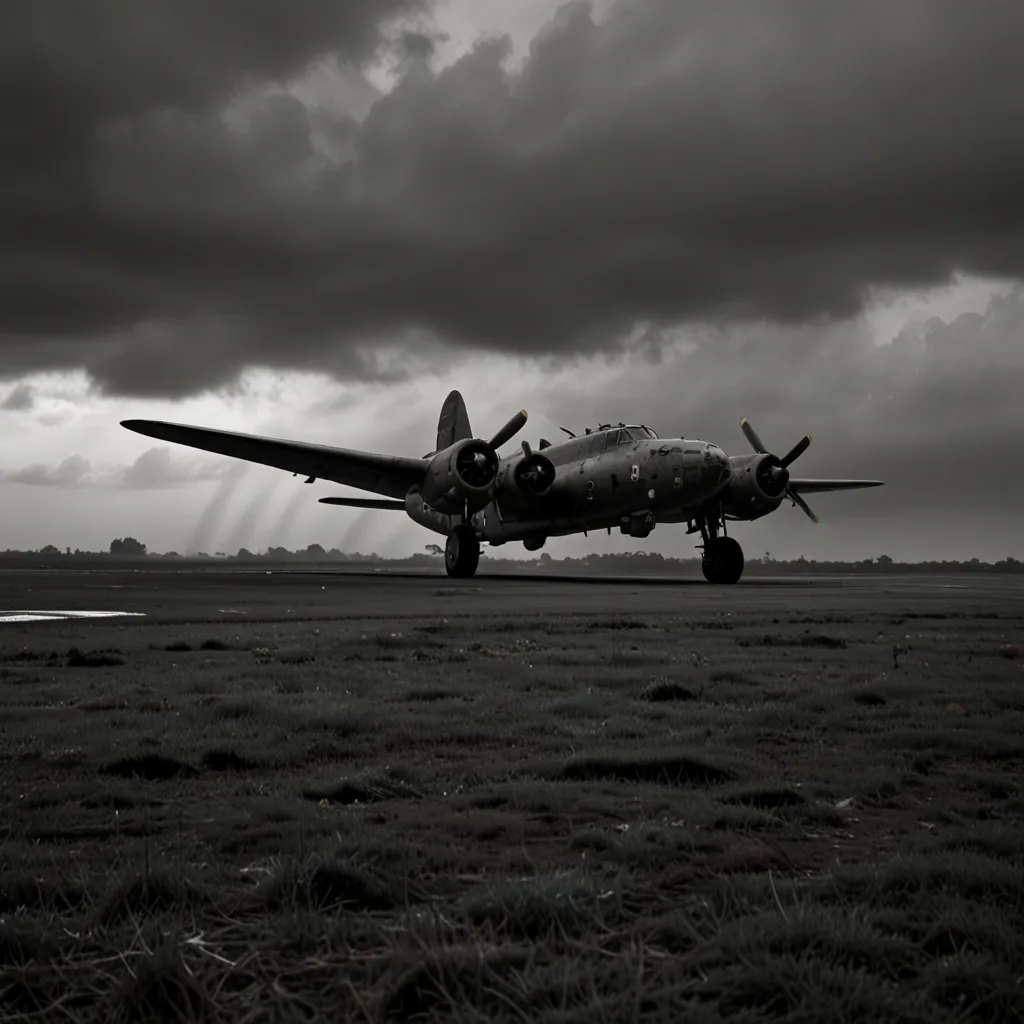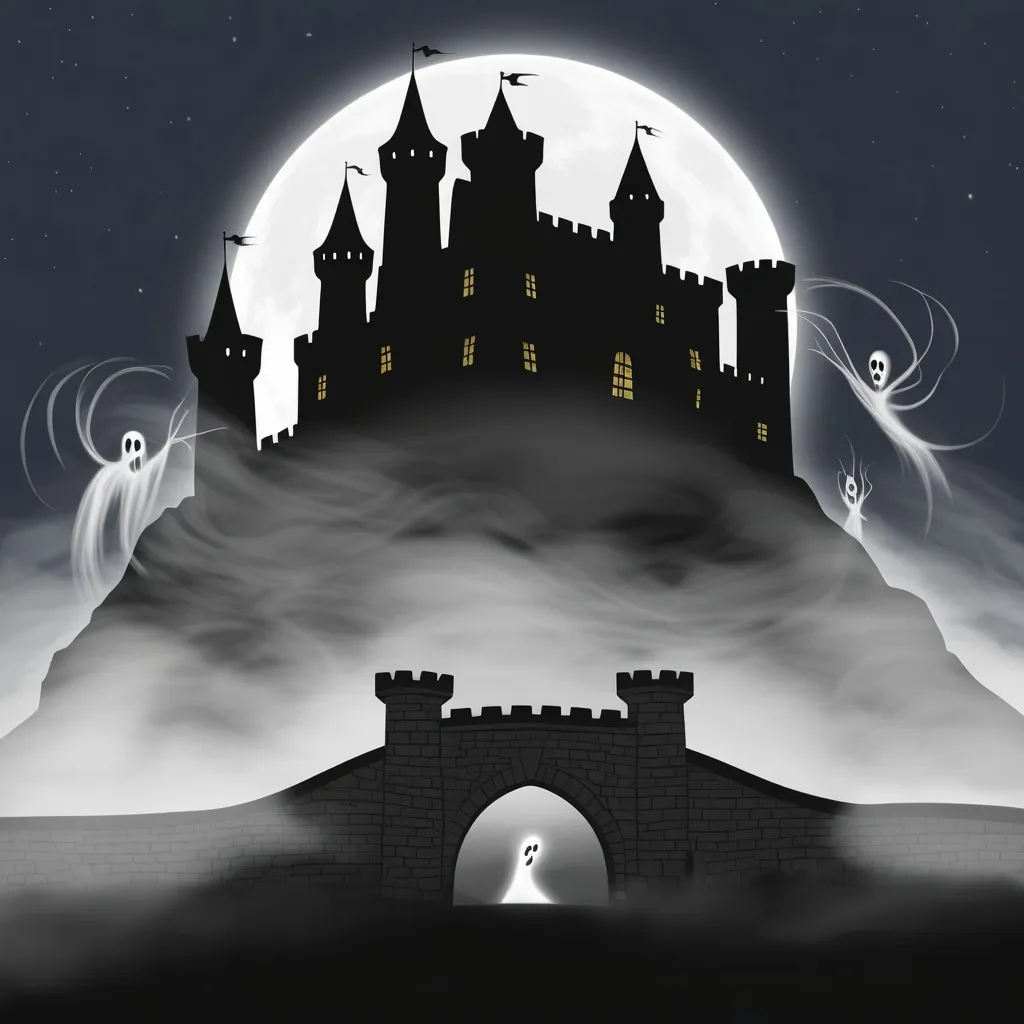In the fabric of World War II, laced between acts of heroism, bravery, and brotherhood, linger mysteries that refuse to fade into history. Among these captivating tales is the legend of the “Phantom Fortress,” a B-17 bomber that seemingly piloted itself back from a mission, making an unaccompanied landing with all of its crew mysteriously absent. It’s an eerie story woven from the threads of war—one that continues to mesmerize and perplex even today.
On November 23, 1944, an ordinary day quickly turned into an extraordinary one for the ground crew at the Royal Air Force base in Kortenberg, Belgium. The day was busy with its routine humdrum when suddenly, they caught the unmistakable sound of a plane’s engines, growing louder and closer by the second. Looking up into the vast expanse of the sky, they spotted the unmistakable silhouette of a B-17—a massive U.S. Army bomber fondly nicknamed the “Flying Fortress.” What caught them off guard, however, was this fortress’s headlong, high-speed descent towards their base. It wasn’t scheduled to arrive; the implications were immediate—it must be an emergency.
As the bomber teetered erratically with its landing gear deployed, panic spread among the soldiers. Everyone hit the ground, bracing for an inevitable crash. The plane roared over the anti-aircraft guns, grazing them by a mere whisker, and landed in a field. Its landing was violent, forceful—pieces of propeller snapped off and soared through the air like shrapnel. Yet, when the dust settled, the most unanticipated chapter of the tale commenced.
Three of the four engines were still running when the ground crew crept out from their cover, anticipating the emergence or cries for help from the bomber’s crew. But no soul appeared. An unnerving 20-minute wait ensued before Major John Crisp mustered the courage to approach and investigate the forlorn behemoth. Weapon drawn, he climbed into the plane only to encounter an uncanny emptiness. No crew, no hint of a struggle—just parachutes neatly folded, fur-lined jackets strewn about, and half-eaten bars of chocolate. “Bad flak,” read the final cryptic entry in the plane’s logbook, but the mystery only deepened.
Major Crisp and his team pieced together what few clues they could. The crew hadn’t bailed—all parachutes were accounted for, and their navigational tools and half-finished rations implied a quick, unplanned disappearance. The major, having shut down the engines, signaled that the plane was secured but with an unsolved enigma left hovering in its wake.
The crux of the inquiry was straightforward yet perplexing: What happened to the crew, and how did the Flying Fortress pilot itself? The press eagerly seized upon the peculiarity, dubbing the plane the “Phantom Fortress” or the “Ghost Ship.” Although initially labeled as legendary, a deeper dive revealed more grounded explanations.
Investigations traced the plane back to the 91st Bomber Group in East Anglia, England, where records confirmed it had embarked with a full crew. However, communication revealed all ten crew members were safe, discovered at a nearby Allied airbase, leaving Lieutenant Harold R. De Bolt, the pilot, to unravel the events. Here the story grounded itself in the harsh realities of wartime missions.
De Bolt recounted a hair-raising flight over Merseburg, Germany, infamous for its devastating anti-aircraft defenses. The B-17, plagued by engine issues and corrupted flight paths, plowed through enemy fire, quickly sustaining critical damage. With no viable path back and equipment malfunctioning, De Bolt ordered his crew to distribute weight and prepare to abandon ship, parachuting into safer territory. They landed within friendly lines in Belgium, assuming their gallant bomber destined to crash shortly thereafter.
The phenomenal part—that the unmanned bomber managed to glide on toward an allied airfield and stick its landing—defied all odds. Eyewitness accounts reported varying conditions of the aircraft’s engines and structure, explaining this mystery through potential self-restoration of power amidst chaos and, perhaps, sheer luck. Such speculative luck, however remarkable, satisfied investigators’ inquiries, although many remained skeptical.
The legendary aura of the Phantom Fortress transcended natural explanations, inspiring superstitions and intrigue. Although official records and logical deductions refute inklings of the supernatural, the uncanny feat where an aircraft landed without its steersman immortalized this eerie tale into wartime folklore.
Episodes of similar nature aren’t perfect rarities in wartime chronicles, but the Phantom Fortress meshed its two-fold narrative of heroic survival and technical mystery into something else—a story that resonated far and wide. Another tale muddled into the mystique involved a boy named John Gill, reflecting his unaware mesh of stories in later years, further romanticizing and solidifying such events into myth.
Today, the Phantom Fortress occupies a curious niche: under scrutiny, a story dressed up in mystique and myth, but stripped down, a compelling portrayal of brave souls outsmarting the jaws of death. Whether perceived as a ghost story or a miracle of human resilience combined with mechanical marvel, the true essence remains—a singular poignant chapter in the voluminous book of war.
Though time and technology have filled in some blanks, and thorough investigating has rationalized parts of the narrative, the spell of an unmanned Flying Fortress effortlessly touching down remains thrilling. It is this cocktail of mystery and reality—the potential lurking in the tales of the past—that continues to captivate anew, merging the boundaries of history and story into seamless enchantment.






